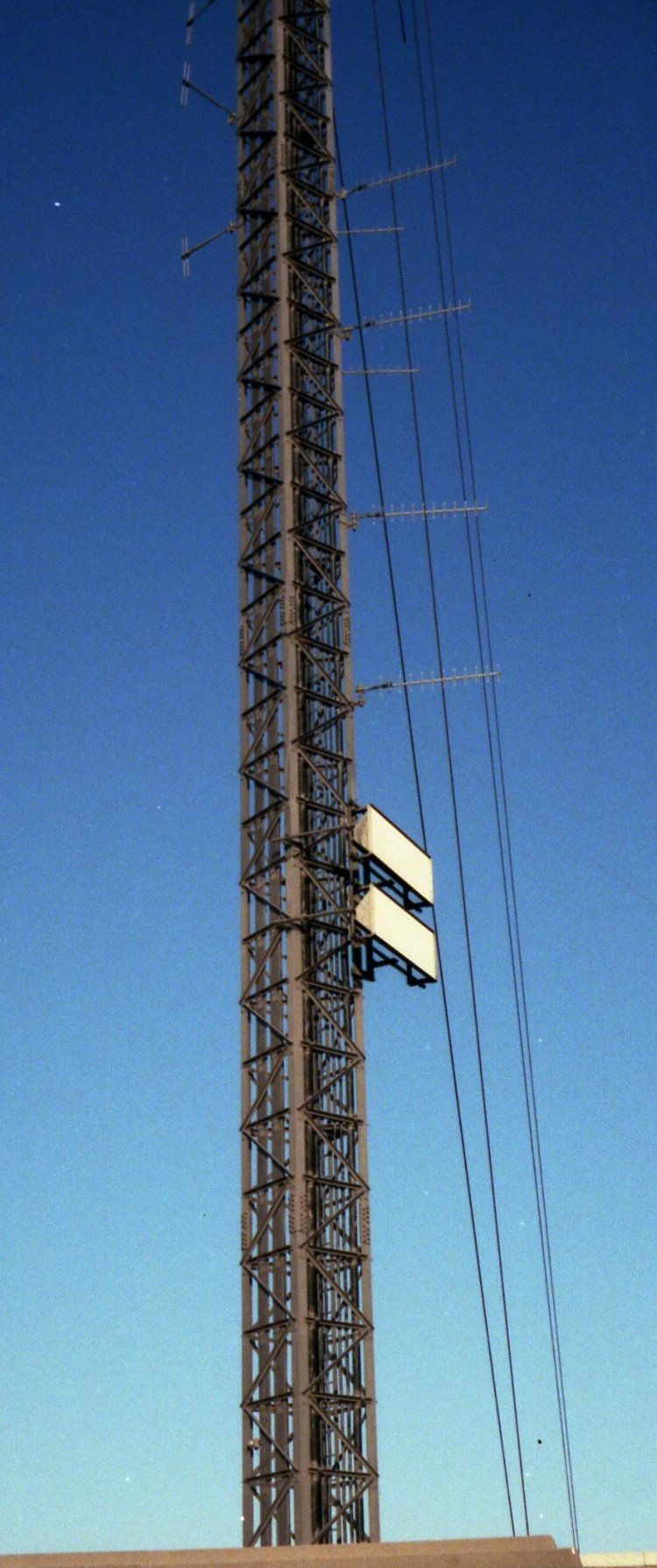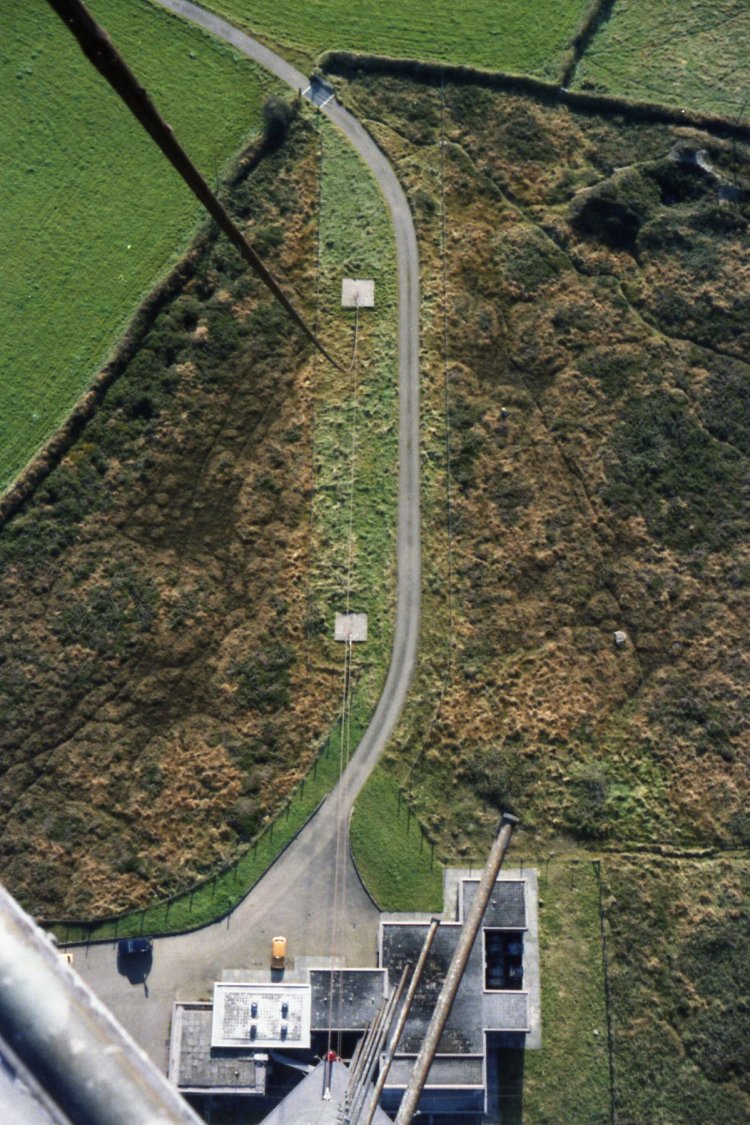 |
UK Broadcast Transmission |
|
|||||||||||
THE TRANSMISSION GALLERY
REDRUTH
| Photos by Mark Carver and TCPD, with some additional notes by Martin Watkins | Page last updated: 2024-12-10 |
| This first photo comes from Mark Carver and dates from 1983. It puts into context the vast scale of the Band I antenna system (see below) which was mounted on the upper TWO dark cylinders on the main body of the mast. The third and lowest (smaller) cylinder is the Band II HP aerial system. Detailed descriptions can be found below. Early Station History 26-Feb-1962 BBC TV in service on VHF ch 1. Closed Jan 1985. 26-Feb-1962 BBC FM radio in service. 89.7 / 91.9 / 94.1 MHz Jan-1971 BBC 2 in service. UHF ch 44. 17-Mar-1971 BBC 1 in service. UHF ch 51 22-May-1971 ITV in service. UHF ch 41. 17-Jan-1983 Radio Cornwall launches on 96.4 MHz. Nov-1983 Channel 4 in service. UHF ch 47. |

| Photos below are from TCPD, who writes: "I recall this was a spectacular February day for a site visit; weren't we lucky at a place like Redruth? Possibly 1984, in preparation for re-engineering the FM antennas." |

| Band I and Band II transmitting antennas. MW writes: In the photo above only the lower half of the Band I aperture is actually visible (top of photo). Redruth had an absolutely massive Band I system, with 16 tiers of unipoles spread over an aperture of 64 m. The aerial was divided into two identical halves, with the stay level at 115 m (at the very top of the picture) separating the two sections. It's not entirely clear why such an enormous Band I array was required, although it's likely that protecting the Crystal Palace (and possibly Divis) service areas would have been a prime consideration, given the tendency of channel 1 VHF to behave more like a shortwave signal for some of the time. As a result of this huge Band I aerial, the Band II aperture occupied a very humble position at only 65.5 m agl on the mast. This situation improved somewhat when the Band I aerial was removed, allowing the new mixed polarisation aerial to be installed at an agl of 122 m. |

| UHF RBL troughs |

| VHF Band I and II RBL were both installed on a remote tower with the usual arrangement of loops to suppress static interference. In this photo it looks as if Band I must have been removed already. As there were no Band II RBL antennas on the main mast the antennas still visible on this tower must be for the FM services. |

| The remote RBL tower is seen at the top right of this view |

| A slightly closer view of the Band II dipoles |


| And the Band I "monopoles" if that is the appropriate term! |

| A chain of old mines and engine houses cross the nearby countryside |

| This type of Band I aerial was often referred to by the BBC as a "unipole V" system. The one at Redruth gave a roughly four leaved clover pattern but with the north-north-easterly leaf favoured over the other three. All the tiers had a single unipole on a bearing of 155 deg. Tiers 3,4,5,6 and 11,12,13 & 14 each had an additional unipole on a bearing of 245 deg. (Mast outline supplied privately). |
The Service Areas of the Redruth Television and VHF Sound Transmitters (BBC RD 1963)
| |
Back to TX Gallery index | TX main index
|